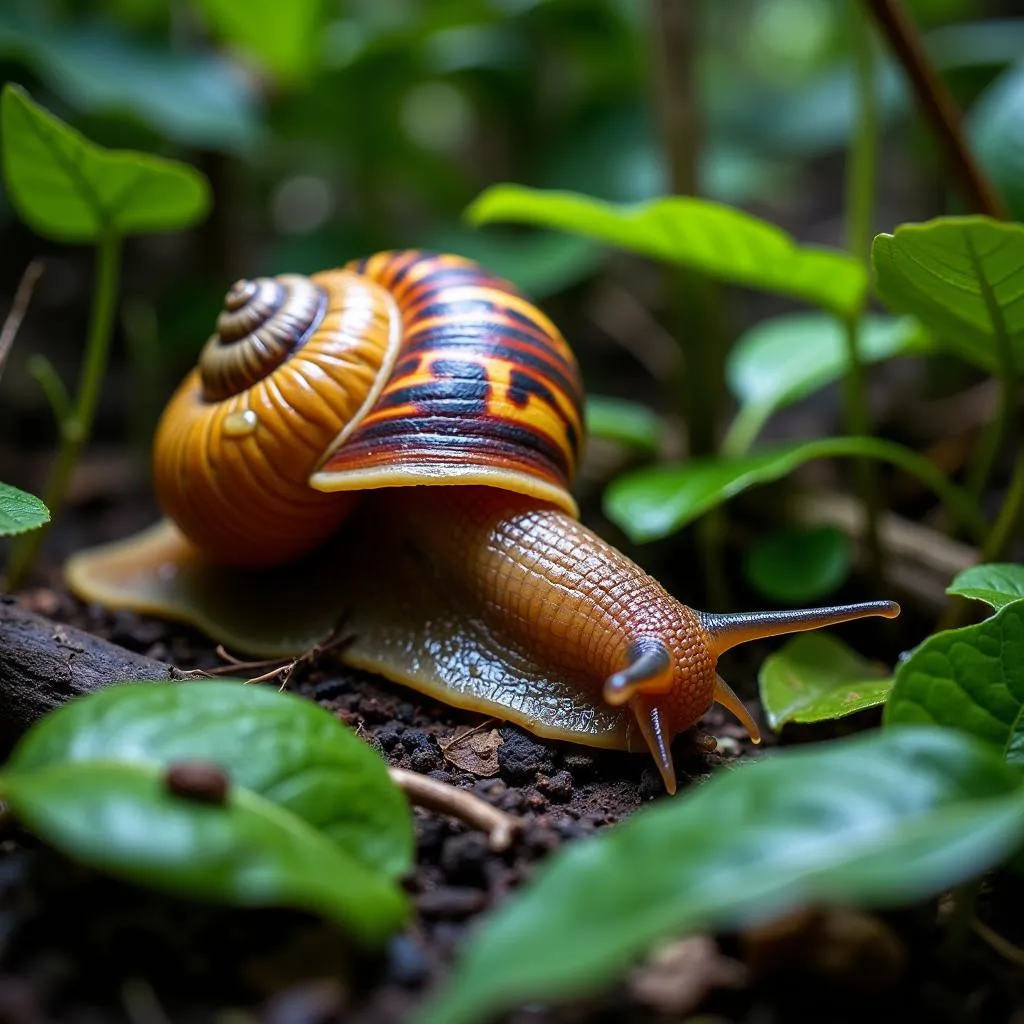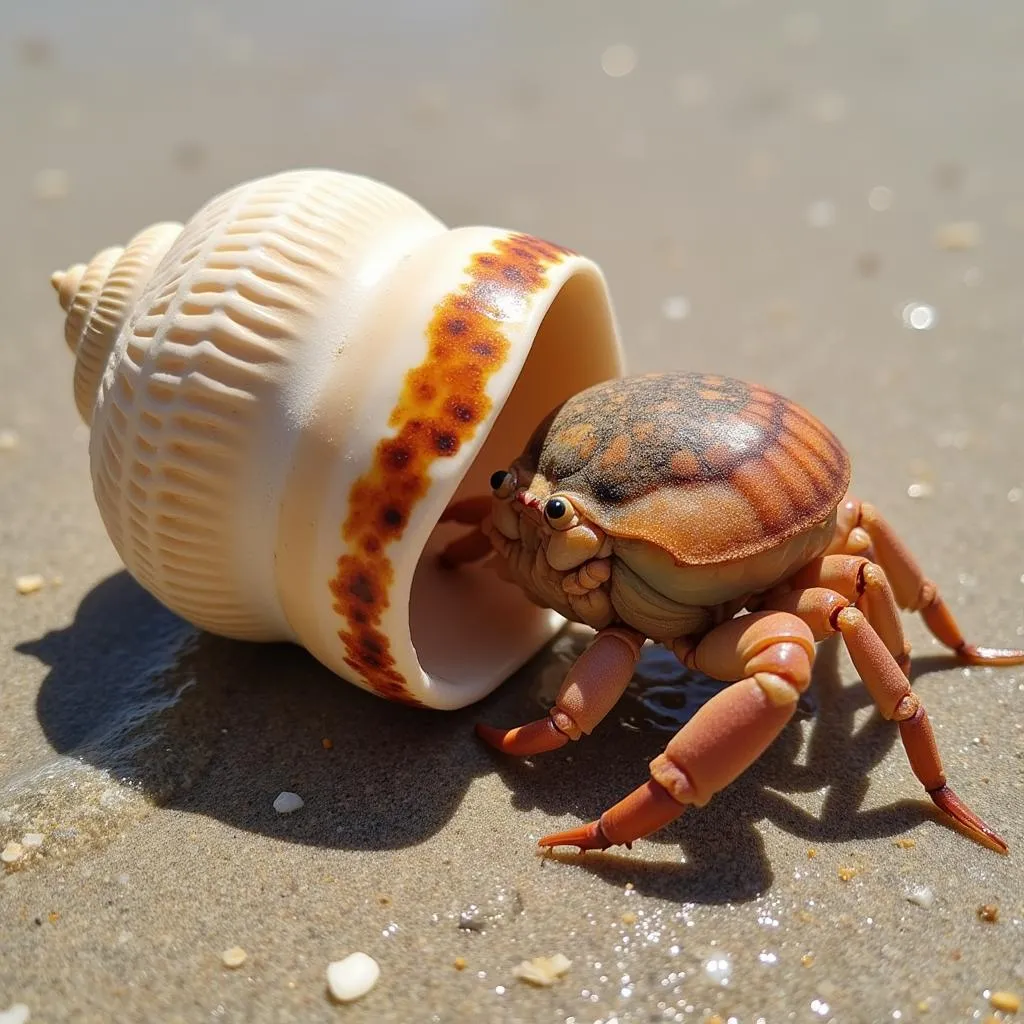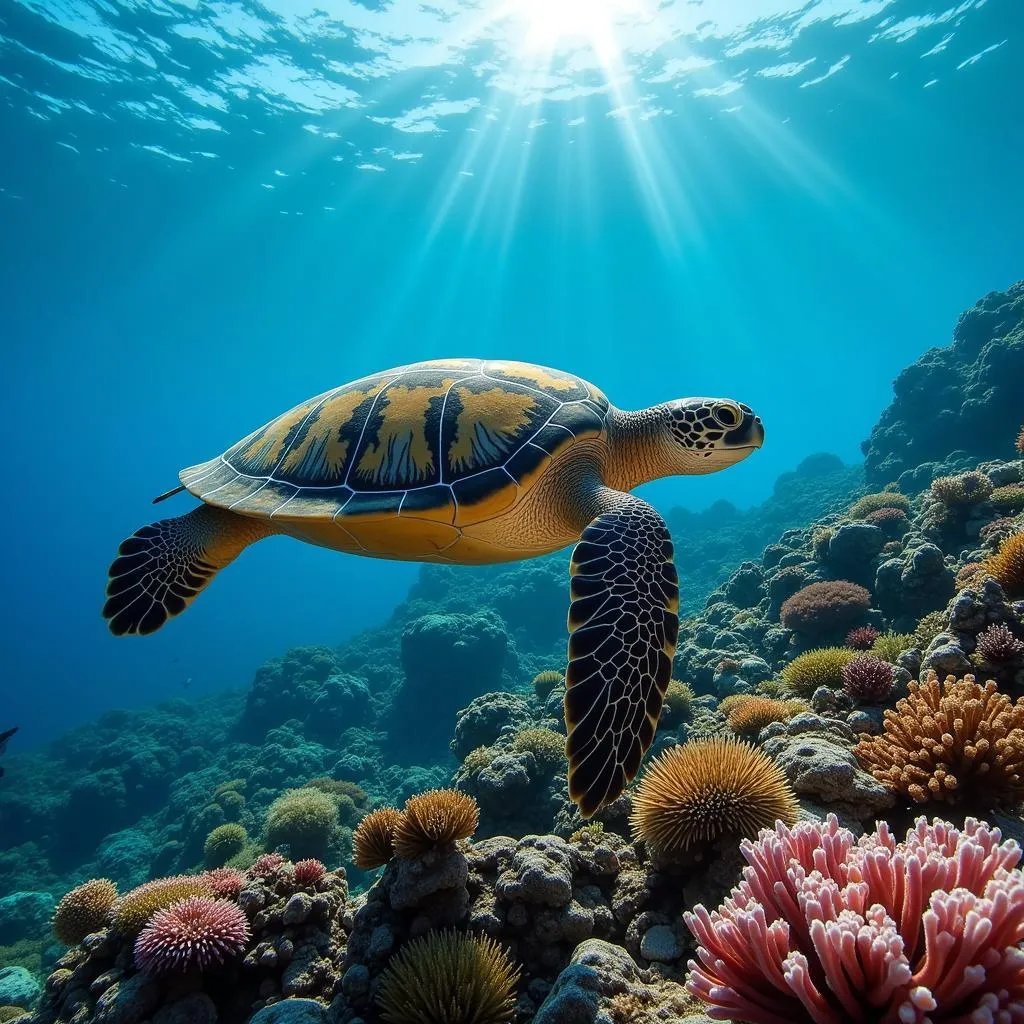Southeast Asia, a region teeming with biodiversity, is home to a fascinating array of creatures, many of which have evolved unique adaptations for survival. Among these are animals that rely on shells as their homes, providing both protection and a portable sanctuary. Let’s delve into the captivating world of these shelled wonders and discover the remarkable ways they thrive in the diverse habitats of ASEA.
Shelled Sentinels: Guardians of the Land and Sea
From the lush rainforests to the vibrant coral reefs, ASEA’s landscapes are teeming with life, and among its most intriguing inhabitants are those that carry their homes on their backs. These shelled creatures, belonging to diverse taxonomic groups, have mastered the art of defense and mobility.
 Land snail with intricate shell in a tropical forest
Land snail with intricate shell in a tropical forest
Land Snails: Masters of Slow and Steady
Land snails, despite their unhurried pace, have conquered diverse terrestrial environments across ASEA. Their shells, crafted from calcium carbonate, provide a sturdy defense against predators and protection from the elements.
These mollusks are particularly adapted to humid conditions, as their shells help to minimize water loss. They play a crucial role in the ecosystem by breaking down organic matter and contributing to soil fertility.
Hermit Crabs: The Ultimate House Hunters
Hermit crabs, unlike their shelled counterparts, don’t grow their own protective armor. Instead, they seek out abandoned shells, often from deceased snails, to use as their mobile homes. As they grow, they must find larger shells to accommodate their increasing size.
 Hermit crab switching to a new shell on a sandy beach
Hermit crab switching to a new shell on a sandy beach
This reliance on found objects highlights the interconnectedness of life within ASEA’s ecosystems, showcasing the resourcefulness of these crustaceans.
Marine Marvels: Shelled Wonders of the Deep
The warm, tropical waters of ASEA are teeming with marine life, and among the most captivating are those that seek refuge within the confines of a shell. These creatures, from the smallest crustaceans to the largest bivalves, demonstrate the incredible diversity of life that thrives beneath the waves.
Sea Turtles: Ancient Mariners with Protective Armor
Sea turtles, ancient reptiles that have roamed the oceans for millions of years, rely on their bony shells for protection from predators. These shells, streamlined for efficient movement through the water, are a testament to the enduring power of evolution.
 Sea turtle gliding above a vibrant coral reef
Sea turtle gliding above a vibrant coral reef
ASEA’s waters provide critical nesting grounds for several species of sea turtles, highlighting the importance of conservation efforts to protect these magnificent creatures.
Bivalves: Filtering the Essence of the Ocean
Bivalves, such as clams, oysters, and mussels, are filter feeders that play a vital role in maintaining the health of ASEA’s marine ecosystems. Their shells, hinged together by a strong ligament, protect their soft bodies as they draw in water and extract plankton and other nutrients.
These organisms serve as indicators of water quality, their presence a testament to the overall health of the marine environment.
Conclusion
From the towering rainforests to the depths of the ocean, ASEA’s shelled animals showcase the remarkable biodiversity and intricate ecological relationships that define this region. Their shells, more than just physical protection, represent a testament to the power of adaptation and the interconnectedness of life on Earth.
By understanding and appreciating the unique adaptations of these creatures, we gain a deeper understanding of the importance of conserving the delicate balance of ASEA’s ecosystems for generations to come.

